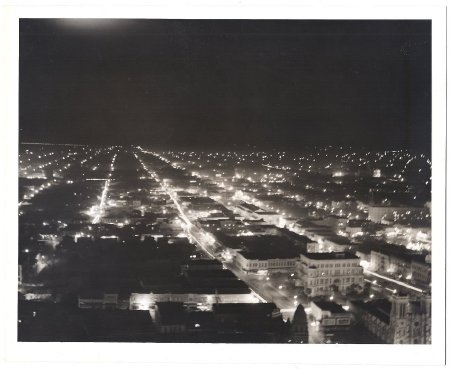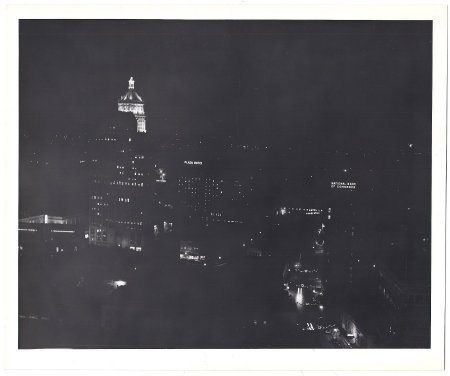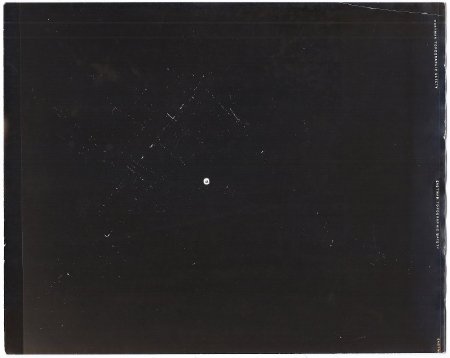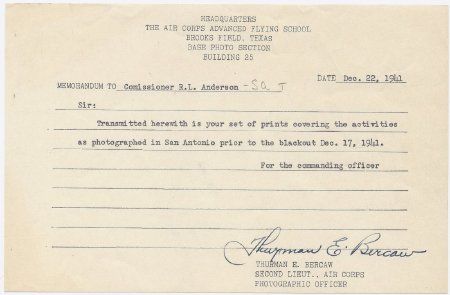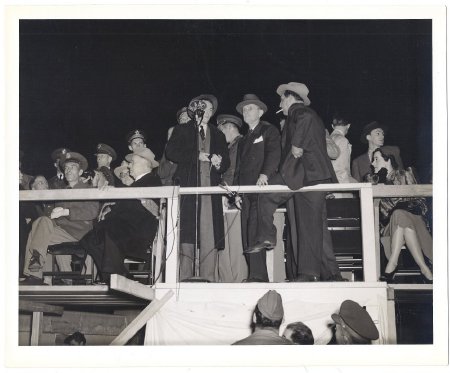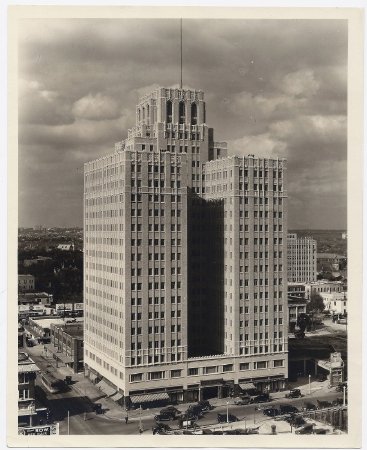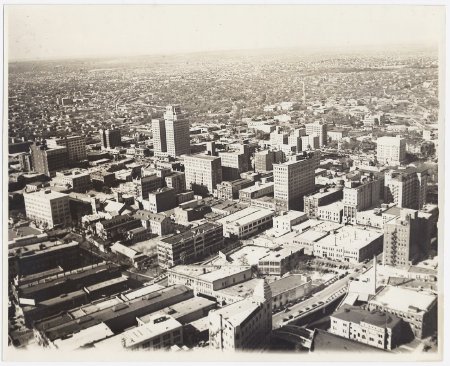Blackout Simulation
History:
At 9:00 p.m. on December 17, 1941, the city went dark following the signal given by blaring factory and railroad whistles, fire sirens, and by the Public Service Company blinking its lights.9 Although dark, the city was not silent. Local radio stations covered the test from atop the Milam Building, which served as the "blackout control tower." The 21-story skyscraper remained off-limits to all except designated personnel. Fifty to seventy-five officials, including Mayor Quin, Commissioner Anderson, Col. Sterling of civil defense, and Lt. L. Harbin of Brooks Field observed the test while perched precariously on wooden platforms or standing on the rooftop. The pilots reported directly to this observation post, where Lt. Harbin relayed information over the public airwaves. After 15 minutes of observation, the pilots began dropping the flares.10
Overall, the observers felt that the city passed the test. Limited crime occurred, mostly against those who left lights burning. A few people decided to take matters into their own hands and "put out" the lights with rocks or, in one instance, pulled a lit shop sign down from a building. Other violations included smoking and lighting cigarettes, and spectators crowding the streets in the hopes of seeing a light show. A few accidental falls resulted in broken arms. However, no major accidents occurred. Officials here banned motor travel after learning about the multiple traffic deaths that occurred in California during blackout conditions. San Antonio was touted for having one of the most successful blackout drills in the country. Many out-of-town officials, including those from Wichita Falls and Colorado, took ideas home to use in their own defense programs.
Overall, the observers felt that the city passed the test. Limited crime occurred, mostly against those who left lights burning. A few people decided to take matters into their own hands and "put out" the lights with rocks or, in one instance, pulled a lit shop sign down from a building. Other violations included smoking and lighting cigarettes, and spectators crowding the streets in the hopes of seeing a light show. A few accidental falls resulted in broken arms. However, no major accidents occurred. Officials here banned motor travel after learning about the multiple traffic deaths that occurred in California during blackout conditions. San Antonio was touted for having one of the most successful blackout drills in the country. Many out-of-town officials, including those from Wichita Falls and Colorado, took ideas home to use in their own defense programs.
About this Image:
Images 1-3 are part of a series of photos taken just prior to and during the blackout. Credit: Photograph by U.S. Army - Air Corps.
1) View looking northwest. City Hall is visible in the lower right corner. Notice the amount of light visible.
2-3) Photos taken as lights began to go out during the blackout. 2 shows the brightness of the Tower Life Building, making it a visible target in the event of an air raid. 3 is an aerial view of the city. The bright spot is probably the Tower Life, with only a few lights making streets visible.
4) A telegram from Thurman Bercaw of the Headquarters of the Air Corps Advanced Flying School at Brooks Field to P.L. Anderson acknowledging the photos taken just prior to the blackout.
5) This photo was taken during the blackout from the roof of the Milam Building. The microphone in center is for KABC radio station, one of the many reporting the event. P.L. Anderson sits just left of center among the many military personnel seated on the platform. Photograph by U.S. Army - Air Corps
6) This view of the Milam building shows its full height. The location of the viewing platforms would have been above the 21st floor. Photographer: H.L. Summerville
7) An aerial view of downtown, looking northwest. The Milam building provided a good vantage point for observing the city in all directions.
1) View looking northwest. City Hall is visible in the lower right corner. Notice the amount of light visible.
2-3) Photos taken as lights began to go out during the blackout. 2 shows the brightness of the Tower Life Building, making it a visible target in the event of an air raid. 3 is an aerial view of the city. The bright spot is probably the Tower Life, with only a few lights making streets visible.
4) A telegram from Thurman Bercaw of the Headquarters of the Air Corps Advanced Flying School at Brooks Field to P.L. Anderson acknowledging the photos taken just prior to the blackout.
5) This photo was taken during the blackout from the roof of the Milam Building. The microphone in center is for KABC radio station, one of the many reporting the event. P.L. Anderson sits just left of center among the many military personnel seated on the platform. Photograph by U.S. Army - Air Corps
6) This view of the Milam building shows its full height. The location of the viewing platforms would have been above the 21st floor. Photographer: H.L. Summerville
7) An aerial view of downtown, looking northwest. The Milam building provided a good vantage point for observing the city in all directions.
To Learn More:
View Catalog Record (Main Image)
View Catalog Record (Image 2)
View Catalog Record (Image 3)
View Catalog Record (Image 5)
View Catalog Record (Image 2)
View Catalog Record (Image 3)
View Catalog Record (Image 5)
Credit:
Courtesy of the San Antonio Conservation Society Foundation.

